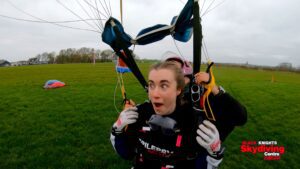What would you like to find out about today?
Unverricht-Lundborg disease (ULD) is one of a group of conditions called the ‘progressive myoclonus epilepsies’. They all cause jerking or twitching movements (myoclonus) as well problems with movement, thinking and memory. They nearly always get worse with time, which is why they are called ‘progressive’.
Other names for ULD include:
- Progressive myoclonic epilepsy Type 1 (or 1A)
- Epilepsy with progressive myoclonus 1 (or 1A)
- EPM1 (or EPM1A)
Who gets Unverricht-Lundborg disease?
ULD usually begins in children before the age of 18, often between the ages of 7 and 13 years. Children have normal development before the syndrome begins. ULD is very rare, but is more common in certain parts of Northern Europe, including Scandinavia (particularly in Finland9) and the Baltic region and in some Mediterranean countries.
ULD is caused by a change (‘mutation’) in a gene called the CSTB gene. The child or young person needs 2 copies of the altered gene to develop ULD – one from each parent. Parents of a child with ULD will usually only have a single copy of the altered gene. This means they won’t know they carry it before having a baby who is affected.
The CSTB gene gives your body instructions for making a protein called cystatin B. This protein is important in brain function, particularly in the part of the brain responsible for movement, called the cerebellum.
Symptoms of Unverricht-Lundborg disease
If your child has ULD, they may get:
- Tonic-clonic seizures – These cause your child to stiffen (the tonic part), fall unconscious and then immediately have a number of rhythmic jerks (the clonic part).
- Myoclonus – brief episodes of muscle twitching or jerking that your child can’t control, and which may progress to myoclonic seizures.
Your child may get tonic-clonic seizures first, or the myoclonus may start first. Tonic-clonic seizures tend to happen either while they’re asleep or soon after waking.
Myoclonus can happen in one or more limbs, or may involve most of the body. Like tonic-clonic seizures, myoclonus tend to happen more often as your child wakes up. But unlike seizures, they stop when your child’s asleep or resting. There are certain things that can trigger myoclonus. These include:
- Loud or sudden noises
- Sudden, or difficult movements
- Lights
- Stress
- Touch, particularly if unexpected
Myoclonus usually becomes gradually worse over 5 to 10 years, and can start to affect all parts of daily life – including standing up, walking, eating and drinking. As they often happen when the child is trying to do something, they’re often called ‘action myoclonus’. Myoclonus can be worse on some days compared to others, and symptoms can also vary over the course of a day.
People with ULD also usually start to develop other problems over time. These may include:
- Difficulties with co-ordination and balance (known as ataxia)
- Slurred speech (known as dysarthria) which can make them difficult to understand
- Difficulties with memory, learning and thinking
Diagnosis of Unverricht-Lundborg disease
Your child should see a specialist doctor called a paediatrician. The specialist will assess your child’s symptoms and history. They may want to see your child walking and doing some other tasks, to help with diagnosis.
Sometimes the early stages of ULD can look a lot like another, more common and milder type of epilepsy, called juvenile myoclonic epilepsy (JME).
Your child’s doctor may organise some tests to help confirm a diagnosis. This will include an EEG (electroencephalogram). This is a test that measures electrical activity in the brain. If your child has ULD, the EEG may show some abnormal activity, especially if they’re exposed to flashing lights. This is called photosensitivity. Your child may also have a brain scan called an MRI (magnetic resonance imaging). This is usually normal for children with ULD. Your child’s paediatrician will also refer them to a doctor who specialises in treating children with epilepsy, called a paediatric neurologist.
A genetic test showing changes in the CSTB gene will be able to confirm the diagnosis in most people with ULD.
Treatment of Unverricht-Lundborg disease
Your child’s doctor may prescribe a number of epilepsy medicines to help control their seizures and myoclonus. These may include:
- Sodium valproate
- Clonazepam
- Levetiracetam
- Brivaracetam
- Piracetam – this is used for the myoclonus only
- Topiramate
- Zonisamide
Your child may need to take more than one of these medicines. Epilepsy medicines work well for some children with ULD, but others may continue to have myoclonus.
Sodium valproate can harm an unborn baby if taken during pregnancy. If there’s any possibility of your child getting pregnant, or doing so in the future, they’ll usually be prescribed a different medicine. If your child is prescribed sodium valproate, their doctor should explain the risks and benefits of taking it.
It’s possible that the ketogenic diet may be helpful in controlling the myoclonic seizures and myoclonus in ULD. Your child’s paediatric neurologist will discuss this with you.
Your child is likely to have prolonged or repeated seizures with ULD. This is what’s known as status epilepticus. They may have tonic-clonic seizures that last longer than 5 minutes, or go from one seizure into another without regaining consciousness. Your child’s paediatrician will discuss a ‘rescue’ or emergency care plan with you to treat any prolonged or repeated seizures as this is a medical emergency.
Information about treatments for children can be found on the Medicines for Children website.
Outlook for Unverricht-Lundborg disease
ULD is a progressive disease. This means the myoclonus and difficulties with balance and co-ordination tend to get worse over the first 5 to 10 years. This makes it difficult to do all the normal activities of daily living, including washing, dressing and undressing, eating and writing. Your child may start to need help with these activities and may eventually need aids to help with walking. Some people go on to need a wheelchair as they get older.
As your child reaches adulthood, the condition tends to stabilise and doesn’t usually get any worse. Some problems may even get better. Tonic-clonic seizures usually happen less often, and may stop altogether. Myoclonus may improve too, although in some people, it continues to get worse.
ULD can vary in how much it affects people. Some people can live relatively normal lives, with just some adaptations to home and working environments. Others may have more severe disability and will need ongoing care and support throughout their lives. Learning and memory difficulties also vary between people – some won’t be affected at all, and others may have more severe problems.
It can be difficult living with the challenges of a long-term disability like ULD, and this may trigger anxiety and depression in some people. Your child’s specialist will be able to give you advice about getting any support you need. Occupational therapy, physiotherapy and speech and language therapy may all help depending on your child’s symptoms.
Support
Contact
Charity for families of disabled children.
Freephone helpline: 0808 808 3555
Email: helpline@contact.org.uk
Mencap
Support for living with learning disabilities.
Freephone helpline: 0808 808 1111
Email: helpline@mencap.org.uk
Young Minds
Mental health charity for young people and their families.
Parents helpline: 0808 802 5544
Hope for ULD
A US-based charity providing support and information to those affected by Unverricht-Lundborg disease.





